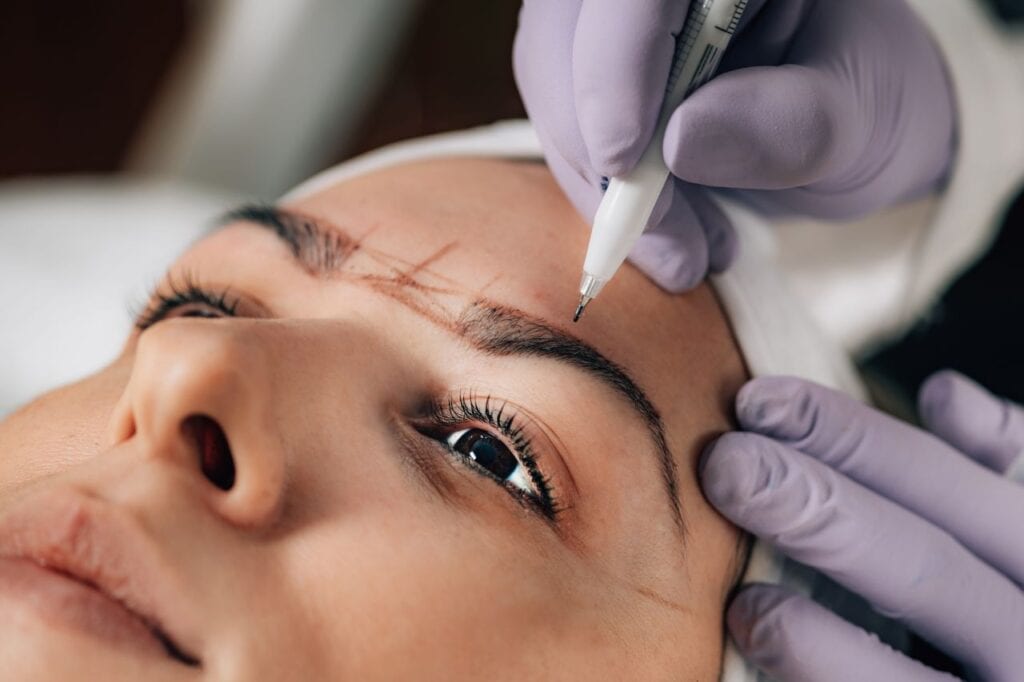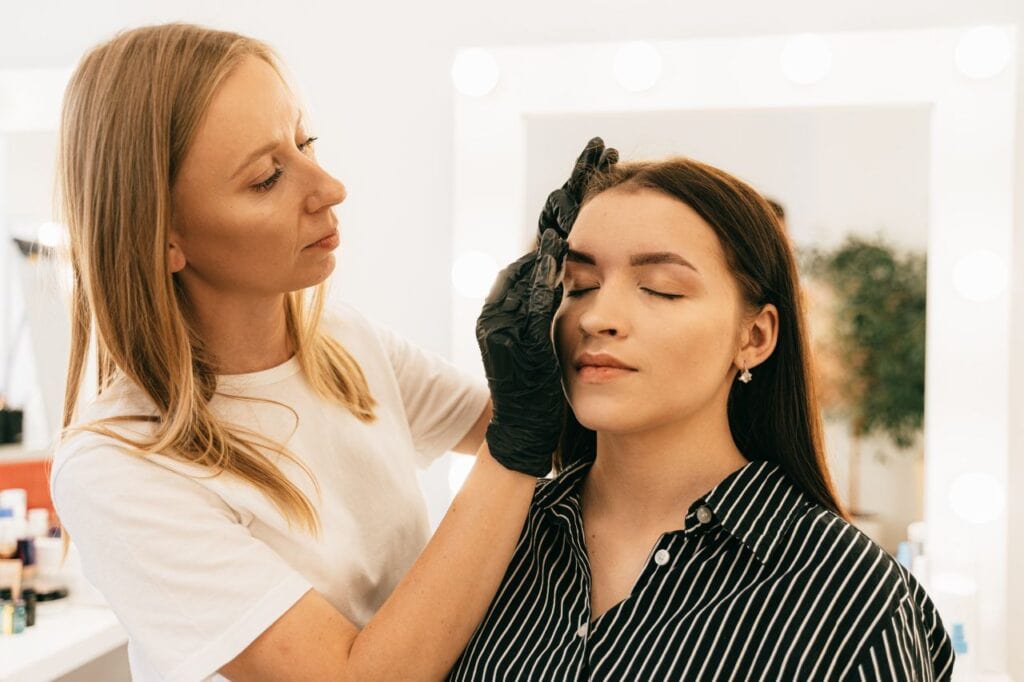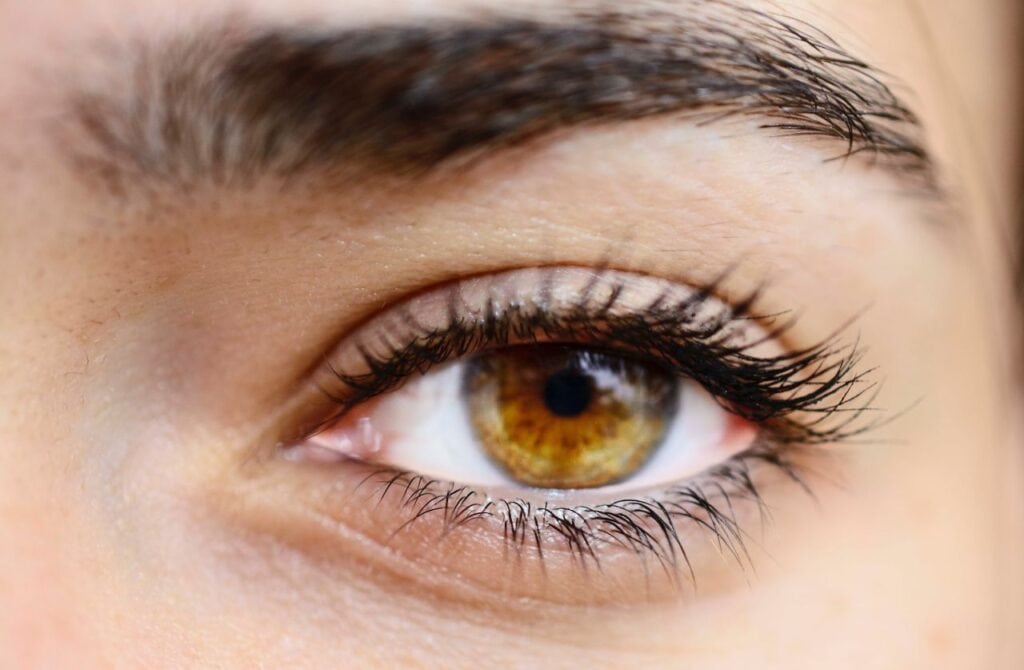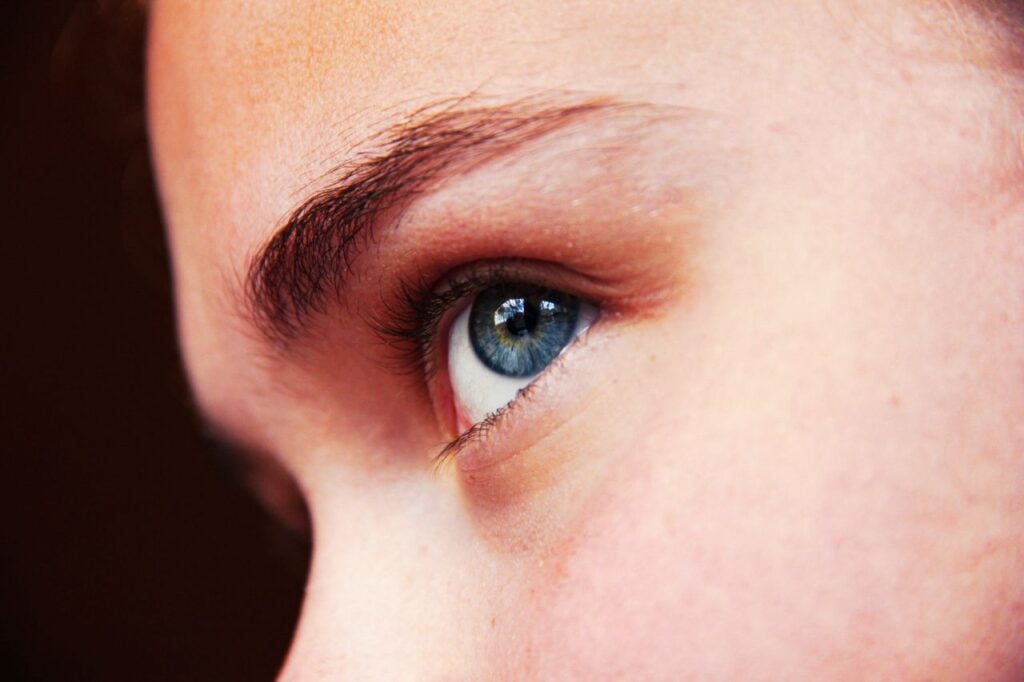Cosmetic tattooing — also known as permanent makeup, micropigmentation, or cosmetic tattoo artistry — is becoming increasingly popular in beauty and self-care. People are attracted to this art form because of the variety of services available, some of which focus on specific areas such as eyeliner, brows, lip liner, and blush/blushes.
So, what, exactly, is the process of cosmetic tattooing? In this article, we'll discuss the many cosmetic tattooing methods available so you can determine if this procedure is good for you. Furthermore, to ensure the process goes well for you, we will discuss its potential advantages and disadvantages. Okay, without further ado, let's dive in!
Purpose
Traditional tattooing aims to produce art on the recipient's skin. It is intended to draw attention to itself and can create any personalised design you like.
In theory, cosmetic tattooing can duplicate certain effects that are often accomplished through the use of makeup or natural traits that are absent. Check out microblading page which has everything you might need near you.
Longevity
A cosmetic tattoo has a different longevity than a regular one because of how it is applied and the makeup of the injected pigments.
There is no need to worry about a conventional tattoo fading away soon. Depending on the design, the lifespan of a cosmetic tattoo might range from one to eight years. For example, micropigmentation of the scalp can persist for four to eight years, while a brow or lip tattoo lasts about two years. Permanent eyeliner lasts about three years.
Perhaps you're thinking, We do not want the cosmetic tattoo to fade away so soon. Still, when you stop to consider how frequently fashion and personal taste shift, it's preferable to be able to switch things up every so often. Because of this risk, tattoo inks should never be used for permanent makeup.
Colours Implemented
Common tattoo inks have been used for decades. However, these inks are specially developed to achieve maximum vibrancy and skin visibility without fading for extended periods of time.
Since a cosmetic tattoo isn't meant to stand out, unique formulations were required to achieve the desired effect. Pigments, in particular formulations that lack some components found in tattoo ink, are used for cosmetic micropigmentation. You want to be marked with something other than a permanent makeup tattoo. Therefore, the formulas are designed to wear off over time.
Application Process
A tattoo gun, a stronger piece of equipment that produces highly saturated colours, is typically used to create traditional body art tattoos.
A cosmetic tattoo can be applied manually (as in microblading, which involves dragging a thin blade into the skin) or mechanically (through a permanent makeup machine). When compared to a tattoo gun, a PMU machine is much more delicate on the skin and causes significantly fewer punctures.
This post provides more details on how conventional and cosmetic tattooing are carried out differently.
FAQs About Cosmetic Tattoos
To provide a more realistic look, cosmetic tattoo pigments are made of smaller pigment particles floating in a diluter. This results in a softer colour in the skin that can be overlaid to achieve a deeper colour. Colour saturation is much enhanced in conventional tattoo inks due to their higher concentration.
The cosmetic tattooing process can be painful, but the discomfort can be managed effectively. An individual's pain threshold can affect the intensity of the suffering they experience. When applying brow and eyeliner makeup, a topical anaesthetic is typically utilised, and this helps to either completely numb or significantly lessen the pain.
It is expected that the redness and swelling will decrease. After the tattoo pigment has been absorbed into the skin, the colour will change several times over the next four weeks until reaching its final, healed state. You can relax knowing that this black pigment will fade after a few days, and the result will be up to sixty per cent lighter than how your brows appear.
What Are the Risks of Cosmetic Tattooing?
- Infections.
- Unqualified artists.
- Scarring.
- Complications with MRI.
- Allergic Reactions.
Compared to the others, some last for more than ten years, while others only last for two. There is no way to predict how long the effects of today's cosmetic tattoos will last, although most estimations place that period anywhere between one and three years.
Cosmetic Tattoo Treatments
Paramedical micropigmentation and permanent makeup are the two primary applications of cosmetic tattooing technology.
Permanent Makeup
Cosmetic tattoos that imitate popular cosmetics products are becoming increasingly popular as individuals seek alternatives to daily makeup applications. For example, makeup on the brows, eyes, and lips can all be mimicked with a cosmetic tattoo.
Eyebrow Tattoos
Microblading of the eyebrows has become increasingly popular amongst ladies all around the world because of celebrities like Cara Delevingne. This year, eyebrow microblading has sped up the makeup application process for ladies.
The most common type of cosmetic tattoo. There is a brow tattoo treatment that may duplicate the appearance in its stable, waterproof version, no matter how you choose to shape your brows. Want to know more about our eyebrow feathering services?
- Microblading – Eyebrows are then outlined with strokes that mimic individual hairs. They are hand-drawn using an implement dragged across the skin, giving the impression that your brows are perfect by nature.
- Nano Brows - Give the appearance of microblading but are made by a machine.
- Microshading or Brow Powder - Create a powdered effect by shading the brows.
- Hybrid or Combination Eyebrows - Blending brush strokes with shading.
Eye Liner Tattoos
The 1990s saw the rise of another major and often unfortunate trend: tattooed eyeliner. However, experts have mastered the technique of tattooing eyelids, making it possible for anyone to always sport a flawless wing.
We find that applying eyeliner is the most excruciating part of doing makeup. However, saving time in the morning is easy with a permanent eyeliner tattoo. Having a needle poked about your eyes may sound unpleasant, but the procedure is short, and the results last for two years or more.
Lip Liner
Tattooing a lip liner has been practised for decades, although it was traditionally done by tattoo artists rather than microblading specialists. Unfortunately, we all remember the lipliner tattoos of the '90s. Thankfully, the practice has evolved into something much more inconspicuous.
Lip blushing refers to the tattooing process used to provide permanent lip colour. It can be done in various ways, colours, and textures, but in every case, a PMU machine is used. Lips can be permanently coloured entirely, or the contours might be done for a lip liner look.
Paramedical Micropigmentation
When used to cover up scars or restore natural traits lost due to various factors, paramedical micropigmentation is a fancy term for a cosmetic tattoo.
This category includes:
Scar Camouflage
Scars can look less noticeable by tattooing them with skin-toned inks. Stretch marks are a common target for this treatment.
Scars on the brow, the scalp, or the lips can be hidden with the help of cosmetic procedures such as tattooing or micropigmentation. Paramedical micropigmentation meets permanent cosmetics.
Some women embrace their stretch marks like battle scars or tiger stripes, while others have cosmetic tattoos to cover them up. While the process won't completely get rid of your stretch marks, a skilled tattoo artist can make them far less noticeable. Nevertheless, covering up stretch marks with a tattoo is no simple task.
Beauty Mark or Freckle Tattoos
Birthmark tattoos, like their more famous cousin, the freckle tattoo, have risen in popularity thanks to the cosmetic tattooing craze. In addition, new microblading pigments permit a semi-permanent appearance, rather than a permanent design, for the sake of the customer's enjoyment and well-being.
Micropigmentation also allows for the reproduction of facial features like freckles and moles. However, these cosmetic tattoos can fool even the most discerning tattoo connoisseurs when properly applied.
The popularity of freckle tattoos on social media can be attributed to their status as one of the safest types of facial tattoos available. Freckle tattoos are a popular trend, but before you get one, it's important to locate an artist who focuses on cosmetic microblading. Tattoos employ a wide variety of hues, and if you're worried about being unhappy with the final product, you should opt for semi-permanent ink.
Scalp Micropigmentation
Hair loss or thinning can be disguised with a cosmetic tattoo that mimics the appearance of short hair. It is a versatile method that may reproduce the buzz cut from scratch across the entire scalp, conceal bald spots, or give the impression of fullness to thin hair.
Micropigmentation Of The Nipple And Areola
Women who have lost one or both breasts may benefit from micropigmentation to produce a natural new areola. In addition, many skilled tattooists can make areola tattoos look so natural they may be three-dimensional.
Cosmetic Tattoos: Are They Truly Permanent?
The beauty of cosmetics is that you may experiment with fresh ways of presenting yourself every day. And if things go wrong, all you have to do is wipe the slate clean and begin again. Cosmetic tattoos make it impossible to conceal your identity. There is nothing that can be done to alter the look of your makeup after getting a tattoo.
Makeup can be used on the tattoo if you want to experiment. Your face's essential appearance, however, will not change.
If you have a cosmetic tattoo and aren't happy with how it turned out, or if you don't like how, it looks on you after a while, you can have it removed. But tattoo removal is often unpleasant, takes numerous sessions, and only sometimes succeeds in completely getting rid of the ink.
Cosmetic tattoos are intended to last a lifetime. However, they may leave a scar even after removal.
Who Is Fit For Cosmetic Tattoos?
It's more common for those with disabilities or health issues to obtain cosmetic tattoos. These include persons with a stroke, brain aneurysm, traumatic brain injury, multiple sclerosis, or cataracts because it helps them appear their best without the hassle of daily makeup application. Similarly, mastectomy tattoos can be used to replace a missing breast.
Those who have an allergy to conventional cosmetics also can get cosmetic tattoos, which will permanently lessen the frequency with which they will need to apply makeup. However, virtually anyone who finds the idea interesting can enjoy the procedure's benefits.
Are Cosmetic Tattoos Right For You?
Cosmetic tattooing treatments can replace a large portion of a woman's normal makeup application. These services revitalise your appearance and boost your self-esteem. It's useful for a wide variety of situations, and it's safe for ladies of any age (18 and up). Looking for eyebrow tattoo salon? Look no further, Cosmetic Tattoo by Rach got you covered.
- Alopecia and other forms of hair loss can be disguised, and this product can restore eyebrow and lash line loss caused by chemotherapy or other medical procedures.
- It's a great alternative for those who can't use regular makeup because of sensitivities.
- It's perfect for working women who need more time applying their makeup daily.
- This is an excellent option for women who struggle with hand steadiness or vision.
- Women who swim or exercise frequently may find this an ideal answer to the problem of their makeup vanishing or smudging.
- Typically, it is used to cover up scars or fix botched eyebrow tattoos.
- It can help you achieve equal eyebrows, eyeliner, and lip liner.
- Cosmetic tattooing is perfect for you if you have trouble applying cosmetics or if you never want to have to wear makeup again.
Conclusion
Cosmetic tattooing is popular in the beauty and self-care industries for eyeliner, brows, lip liner, and blush/blush. It draws attention and may be customised to make any pattern. The application procedure and pigment composition make it more durable than a regular tattoo. Unlike traditional tattoo inks, these inks are designed to maintain vibrancy and make the skin visible for decades. Traditional tattoos are usually produced with a tattoo gun, which produces richer colours.
Cosmetic tattoos are applied manually or automatically. Paramedical micropigmentation and permanent makeup use cosmetic tattooing most often. Cara Delevingne has popularised eyebrow microblading, the most common cosmetic tattoo. Tattooing eyeliner has been around for decades, but the current form needs to be more visible. Permanent lip blushing is tattooed.
Paramedical micropigmentation helps conceal scars and repair faded or deformed features. Microblading pigments, birthmark inks, and skin-coloured inks are choices. Unfortunately, micropigmentation mimics freckles and moles, fooling tattoo artists. If you wish to join social media's icy tattoo trend, hire a cosmetic microblading artist. If you're worried about dissatisfaction, get a semi-permanent tattoo. There are several colour options.
Micropigmentation can create a natural new areola for women who have lost one or both breasts, and a cosmetic tattoo mimics short hair that can hide hair loss. Permanent cosmetic tattoos are designed to last. However, removal can leave a scar. Stroke, brain aneurysm, severe brain injury, multiple sclerosis, and cataract surgery patients are more prone to obtain beautiful tattoos. Cosmetic tattooing can replace most women's makeup, boosting their confidence, attractiveness, and well-being. It covers flaws, corrects tattoos, and provides symmetrical brows, eyeliner, and lip liner for all ages.
Content Summary
- Cosmetic tattooing — also known as permanent makeup, micropigmentation, or cosmetic tattoo artistry — is becoming increasingly popular in beauty and self-care.
- People are attracted to this art form because of the variety of services available, some of which focus on specific areas such as eyeliner, brows, lip liner, and blush/blushes.
- Furthermore, to ensure the process goes well for you, we will discuss its potential advantages and disadvantages.
- Depending on the design, the lifespan of a cosmetic tattoo might range from one to eight years.
- A cosmetic tattoo can be applied manually (as in microblading, which involves dragging a thin blade into the skin) or mechanically (through a permanent makeup machine).
- When compared to a tattoo gun, a PMU machine is much more delicate on the skin and causes significantly fewer punctures.
- This post provides more details on how conventional and cosmetic tattooing are carried out differently.
- Paramedical micropigmentation and permanent makeup are the two primary applications of cosmetic tattooing technology.
- Cosmetic tattoos that imitate popular cosmetics products are becoming increasingly popular as individuals seek alternatives to daily makeup applications.
- For example, makeup on the brows, eyes, and lips can all be mimicked with a cosmetic tattoo.
- Microblading of the eyebrows has become increasingly popular amongst ladies all around the world because of celebrities like Cara Delevingne.
- This year, eyebrow microblading has sped up the makeup application process for ladies.
- The most common type of cosmetic tattoo.
- However, saving time in the morning is easy with a permanent eyeliner tattoo.
- Lip blushing refers to the tattooing process used to provide permanent lip colour.
- When used to cover up scars or restore natural traits lost due to various factors, paramedical micropigmentation is a fancy term for a cosmetic tattoo.
- Scars on the brow, the scalp, or the lips can be hidden with the help of cosmetic procedures such as tattooing or micropigmentation.
- Paramedical micropigmentation meets permanent cosmetics.
- Nevertheless, covering up stretch marks with a tattoo is a complex task.
- The popularity of freckle tattoos on social media can be attributed to their status as one of the safest types of facial tattoos available.
- Freckle tattoos are a popular trend, but before you get one, it's important to locate an artist who focuses on cosmetic microblading.
- Hair loss or thinning can be disguised with a cosmetic tattoo that mimics the appearance of short hair.
- There is nothing that can be done to alter the look of your makeup after getting a tattoo.
- Makeup can be used on the tattoo if you want to experiment.
- It's more common for those with disabilities or health issues to obtain cosmetic tattoos.
- Those who have an allergy to conventional cosmetics can also get cosmetic tattoos, which will permanently lessen the frequency with which they need to apply makeup.
- Cosmetic tattooing treatments can replace a large portion of a woman's normal makeup application.
- These services revitalise your appearance and boost your self-esteem.
- Typically, it is used to cover up scars or fix botched eyebrow tattoos.
- Cosmetic tattooing is perfect for you if you have trouble applying cosmetics or never want to wear makeup again.






